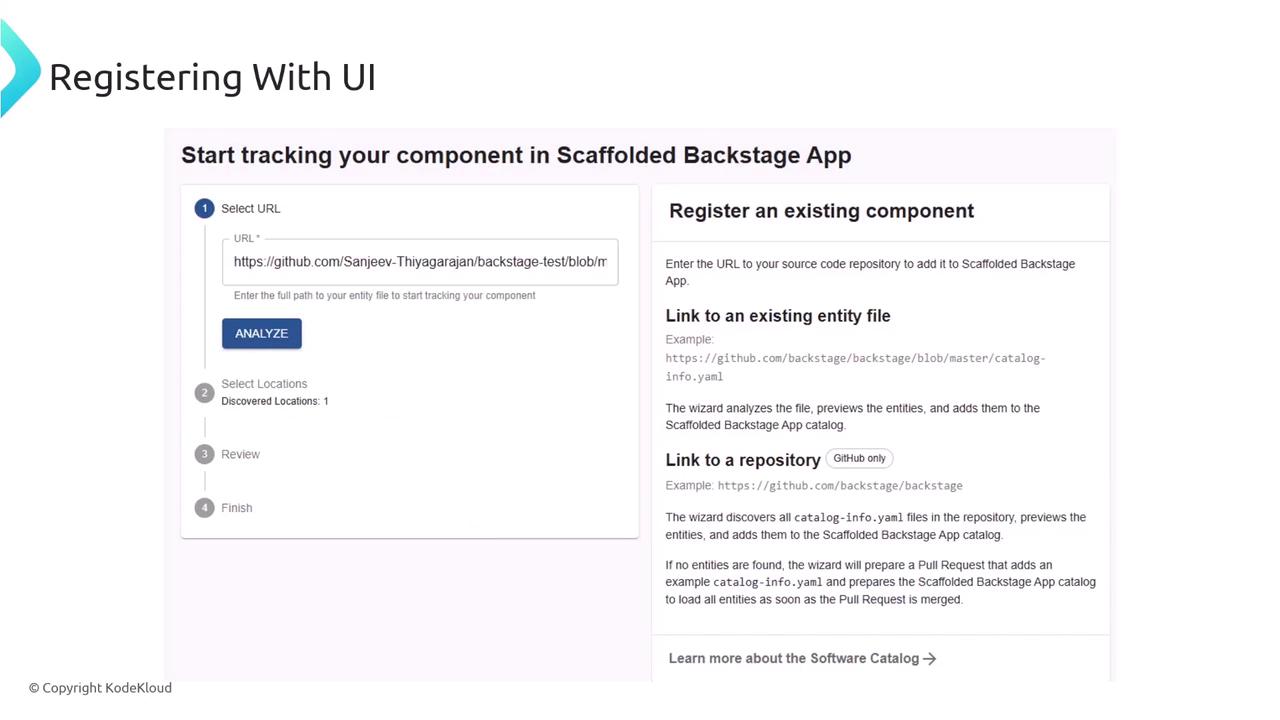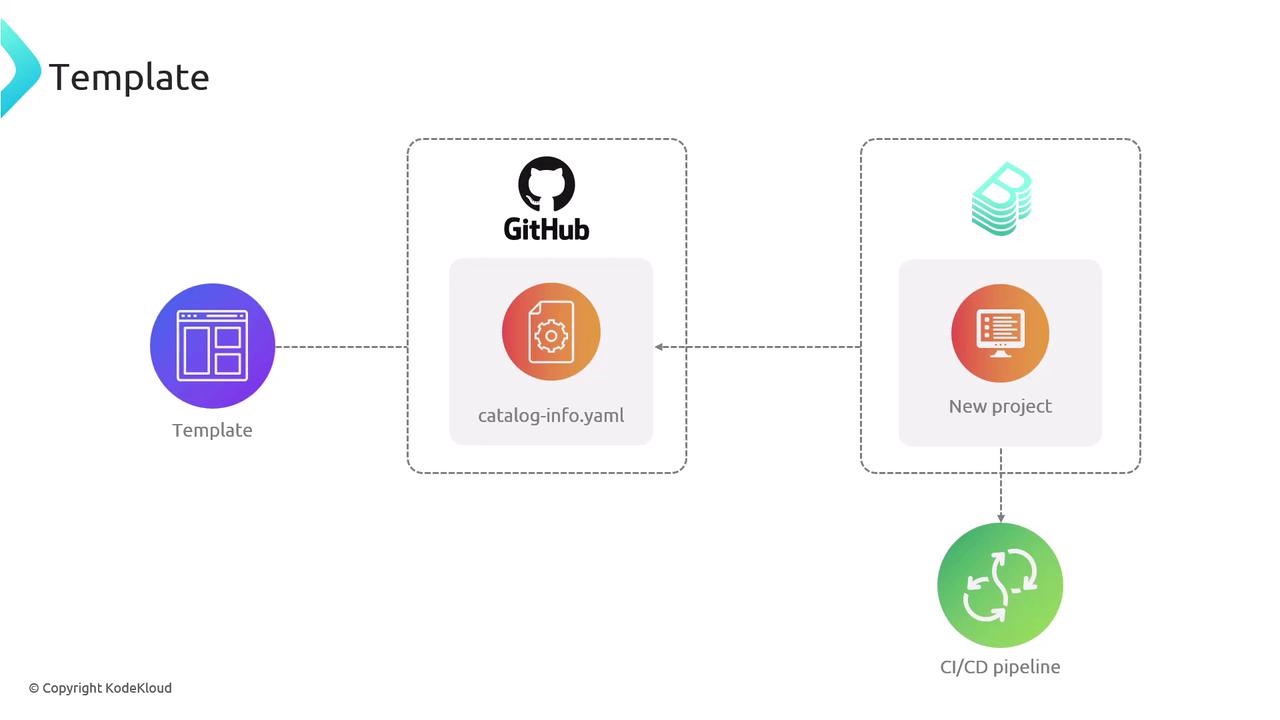Certified Backstage Associate (CBA)
Catalog
What is an Entity
In this lesson, we explore Backstage’s catalog capabilities by breaking down what an Entity is. In Backstage, an Entity centralizes metadata and relationships for software components, APIs, users/groups, resources (e.g., databases, infrastructure), and systems (collections of components).

Defining a Backstage Entity via YAML
Backstage Entities are declared in catalog-info.yaml files using a common YAML schema—very similar to Kubernetes manifests. Each entity document comprises:
- apiVersion: Schema version (e.g.,
backstage.io/v1alpha1). - kind: Entity type (e.g.,
Component,API,User). - metadata: Attributes such as
name,description,labels,annotations,tags, and externallinks. - spec: Kind-specific configuration (e.g.,
type,lifecycle,owner,system).
Here’s a complete example of a Component entity:
apiVersion: backstage.io/v1alpha1
kind: Component
metadata:
name: artist-web
description: The place to be, for great artists
labels:
example.com/custom: custom_label_value
annotations:
example.com/service-discovery: artistweb
circleci.com/project-slug: github/example-org/artist-website
tags:
- java
links:
- url: https://admin.example-org.com
title: Admin Dashboard
icon: dashboard
type: admin-dashboard
spec:
type: website
lifecycle: production
owner: artist-relations-team
system: public-websites
Where to Store catalog-info.yaml
It’s best practice to colocate your catalog-info.yaml with your source code. Typically you place it at the root of your project repository:

Note
Keeping catalog-info.yaml beside your code enables automatic scaffolding, version control, and seamless CI/CD integration.
Alternatively, you can centralize definitions in a dedicated repository or object storage (e.g., S3), then point Backstage at that location:

For the examples below, we assume one catalog-info.yaml per project, located at the repository root.
Registering Backstage Entities
After creating YAML definitions, configure Backstage to discover and register them. Common registration methods include:
| Method | Description |
|---|---|
| Static Configuration | Declare each entity URL or file path in app-config.yaml under catalog.locations. |
| UI Registration | Use the Register Existing Component form in the Backstage catalog interface. |
| Scaffolder Templates | Generate and auto-register catalog-info.yaml when scaffolding new projects. |
| Entity Providers | Bulk-import entities by scanning GitHub repos, S3 buckets, or other sources. |
1. Static Configuration
Add your entity locations to app-config.yaml:
catalog:
locations:
- type: url
target: https://github.com/myorg/auth-component.yaml
- type: file
target: ./catalog-info.yaml
2. Registering via the Backstage UI
Backstage’s catalog UI offers a Register Existing Component flow. Paste the catalog-info.yaml URL, validate, and confirm:

3. Using Scaffolder Templates
When you scaffold a project with Backstage Templates, catalog-info.yaml is created and registered automatically:

4. Entity Providers
Entity Providers scan configured sources (e.g., GitHub, S3) for YAML definitions and import them in bulk. This method streamlines onboarding across multiple projects:

Links and References
Watch Video
Watch video content